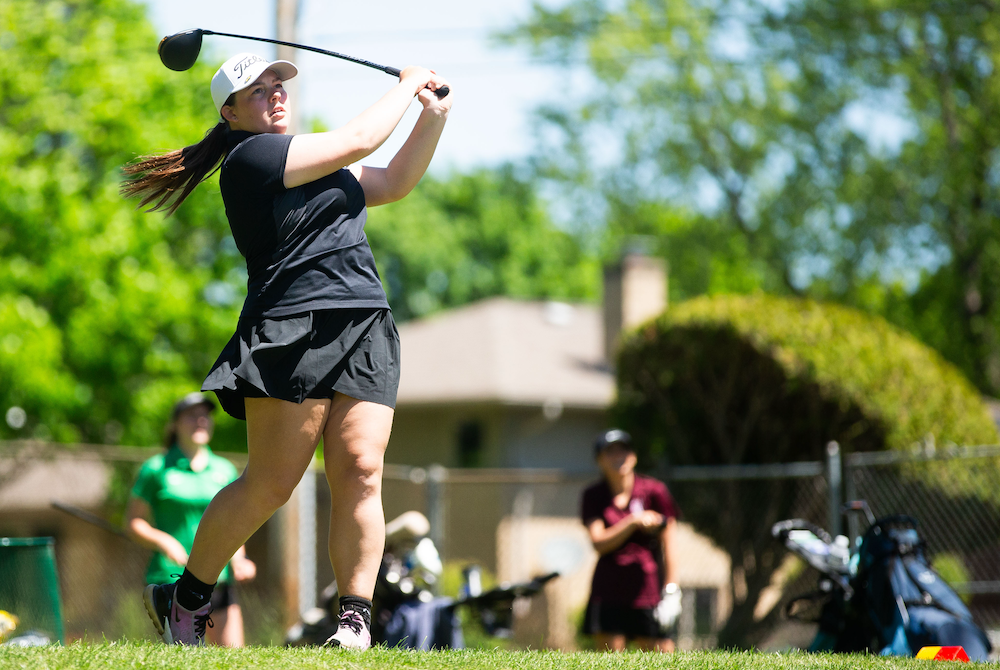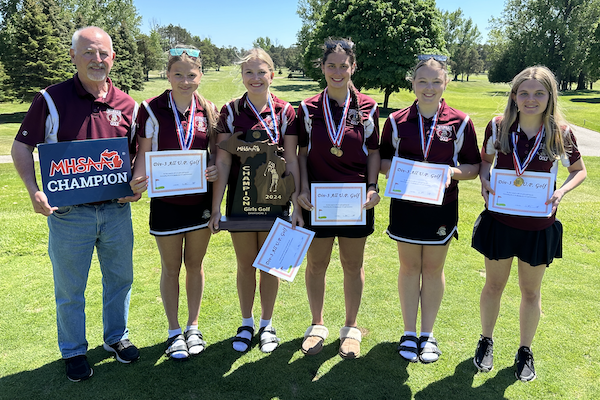
Casting Lines for Future Tournaments
August 12, 2016
By Jack Roberts
MHSAA Executive Director
The MHSAA is best known to the public for the tournaments it conducts to conclude the fall, winter and spring seasons each school year.
These tournaments, the first and largest program of the MHSAA, have survived the Vietnam War, the Korean conflict and two World Wars. They have survived the technology bubble, the housing collapse, the energy crisis and the Great Depression.
MHSAA tournaments existed at the dawn of aviation and at the time of our nation’s lunar landing. Popes, presidents and governors have changed and changed again and again, and MHSAA tournaments roll on year after year.
But the sense of tradition and permanence and inevitability of MHSAA tournaments doesn’t dissuade us from asking questions about our tournaments, even some of the most basic questions. Here are two.
Question #1
I have long been and will always be an advocate for a Ryder Cup format for the MHSAA Golf Finals, and a team tennis approach to the MHSAA Tennis Finals; but 90 years of tradition is hard to overcome. Might this be a more exciting format? Could it be co-ed? Could it reverse the decline in boys tennis participation, and increase girls golf participation? Wouldn’t it be fun to try?
Periodically, the International Olympic Committee requires each of the designated Olympic sports to defend its status, to state its case why the sport should remain a part of the Olympic program. Then, after a series or votes that retain one sport at a time, the IOC drops the sport that makes the weakest case. It does so to make room for one of the previously unlisted sports that makes the best case for inclusion.
This would appear to keep the existing Olympic sports on their toes, and to keep the Olympic movement fresh and reflective of modern trends in sports.
While I would not enjoy the controversy, I can see the potential for some positive results if the MHSAA were to invoke the same policy for determining the 14 tournaments it will provide for girls and the 14 for boys.
This might cause us to consider more deeply what a high school sport should look like, or at least what an MHSAA tournament sport should stand for.
On the one hand, we might be inclined to drop tournaments for those sports that involve mostly non-faculty coaches and non-school venues, or require cooperative programs to generate enough participants to support a team, or resort almost entirely to non-school funding, or cater to individuals more than teams.
Or perhaps this process would cause policymakers to forget traditional thinking and ask: “In this day and age, should we shake off traditional notions of sport and consider more where modern kids are coming from?” That might mean fewer team sports and more individual sports, more “extreme” sports like snowboarding and skateboarding, and more lifetime sports, meaning not just golf and tennis and running sports, but also fishing and even shooting sports.
Currently, MHSAA policy states that the MHSAA will consider sponsorship of a tournament series for any sport which 64 member schools conduct on an interscholastic basis as a result of action by the governing boards of those schools.
Should the only question be how many schools sponsor a sport, or must an activity also have certain qualities and/or avoid certain “defects?” What should an MHSAA tournament sport look like and stand for?
Question #2
Bristling from criticism that his association is a money-grabbing exploiter of children, my counterpart in another state said, “If we were running our programs just to make money, we would do very many things very differently.” I knew exactly what he meant.
Because we care about the health and welfare of students, because we mean what we say that the athletic program needs to maximize the ways it enhances the school experience while minimizing academic conflicts, and because we try to model our claim that no sport is a minor sport when it comes to its potential to teach young people life lessons, we operate our programs in ways that make promoters, marketers and business entrepreneurs laugh, cry or cringe.
If money were the only object, we would seed and select sites to assure the teams that attracted the most spectators had the best chance to advance in our tournaments, regardless of the travel for any team or its fan base. If money were the only object, we would never schedule two tournaments to overlap and compete for public attention, much less tolerate three or four overlapping events. If money were the only object, we would allow signage like NASCAR events and promotions like minor league baseball games.
Those approaches to event sponsorship may not be all wrong; they’re just not all right for us. And we will live with the consequences of our belief system.
During a typical school year, more than 20 percent of the MHSAA’s 2,097 District, Regional and Final tournaments lose money. Not a single site in golf, skiing or tennis makes a single penny. In no sport did every District, Regional and Final site have revenue in excess of direct expenses.
In fact, in only three sports – boys and girls basketball and football – is revenue so much greater than direct expenses overall that it helps to pay for all the other tournaments in which the MHSAA invests.
That’s right: invests. When we present our budget to our board, we talk about the MHSAA’s investment in providing tournament opportunities in all those sports and all those places that cannot sustain the cost of those events on their own. How much is this investment worth to students, schools and society?
These two are core questions that require our focus far in advance of talk about scheduling, site selection, seeding and the myriad matters that too often hijack our time and attention.

Pederson Wins Memorably, Ontonagon Ascends Again in 'Phenomenal' Fashion
By
Jason Juno
Special for MHSAA.com
May 30, 2024
ESCANABA – Big Bay de Noc’s Camryn Pederson carded an 89 on Thursday to win the Upper Peninsula Division 3 Final individual champion and become the first U.P. champion to clear 90 since 2019.
“It feels really good,” she said. “I tried my best to golf as good as I could today, and I’m really glad that it came out the way it was. It’s a good way to end my senior year.”
She said she liked the open course that was low on hazards at the Escanaba Country Club. And she did most things well during her round Thursday.
“I think I minimized my putts. I only one or two-putt most of the holes,” Pederson said. “And my drives were really good.”
She became the second golfer from Big Bay de Noc to win a U.P. Finals individual golf title. Samantha Guertin won Division 3 in 2006 with a 90.
Pederson’s team was seeking its first title since 2005 after finishing runner-up last year, but finished second to a school where girls golf has pretty much always been strong – Ontonagon.
 When the MHSAA first separated the U.P. Finals into separate classes, Ontonagon won the first 10 Class C-D championships, from 1978 to 1987. When Class D got its own U.P. championship tournament, the Gladiators girls won the first four, part of a five-year run of titles from 1994 to 1998. When classifications changed again in 2001, and the name of the smallest group of schools changed from Class D to Division 3, Ontonagon didn’t stop winning, racking up seven more Finals championships.
When the MHSAA first separated the U.P. Finals into separate classes, Ontonagon won the first 10 Class C-D championships, from 1978 to 1987. When Class D got its own U.P. championship tournament, the Gladiators girls won the first four, part of a five-year run of titles from 1994 to 1998. When classifications changed again in 2001, and the name of the smallest group of schools changed from Class D to Division 3, Ontonagon didn’t stop winning, racking up seven more Finals championships.
On Thursday, the Gladiators made it eight wins in Division 3 and 23 overall.
Two of their golfers finished under 100 – runner-up Madyson Pantti carded a 94, and Sam Bailey had a 98. All five finished among the top 10 individuals. Summer Stites’ 100 was good for a fourth-place tie, and Olivia Lockhart and Shayna Stites tied for 10th with 108s.
It was the first U.P. Finals golf championship for all of them, including coach Jim Jessup. The Gladiators’ last team wins came with back-to-back titles in 2018 and 2019.
Ontonagon repeated as Copper Mountain Conference champion this year. The Gladiators had finished third last season at the U.P. Division 3 Final and outshot Big Bay de Noc on Thursday by eight strokes, 400-408. Ontonagon shot 36 strokes better than at last season’s Final, and every golfer shot under 110, which Jessup called “phenomenal.”
“I think the girls just worked really hard to better themselves,” he said. “Their stroke play was better, their consistency was better.”
Pantti improved her score by eight strokes from last year’s Final. The junior will have another shot at an individual championships in 2025, but she had a lot to be proud of this time with her runner-up finish that led the Gladiators to a team title.
“I’m really excited,” she said. “It was something that we’d been looking forward to all season. We’ve done good in a lot of our meets, and I thought this was a really good year for us.”
PHOTOS (Top) Big Bay de Noc's Camryn Pederson follows her drive on No. 4 on Thursday at Escanaba Country Club. (Middle) Ontonagon celebrates its latest girls golf Finals championship. (Photos by Jason Juno.)

